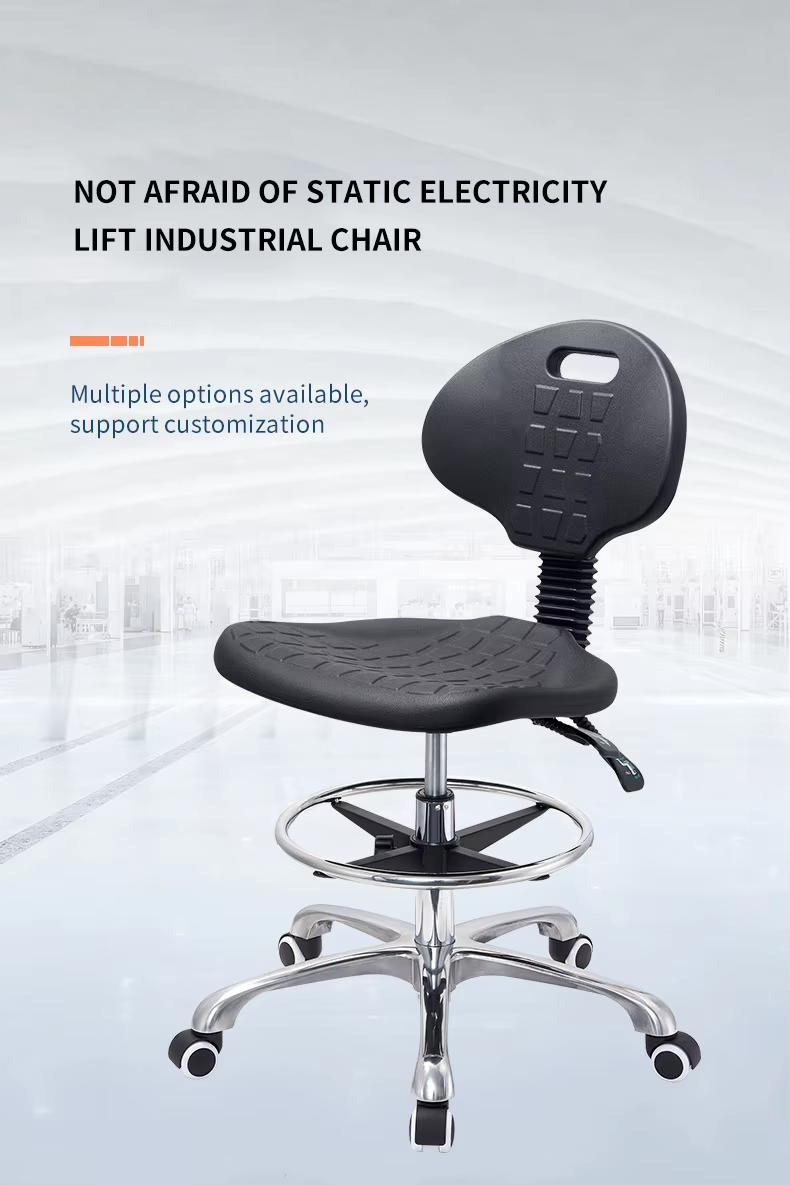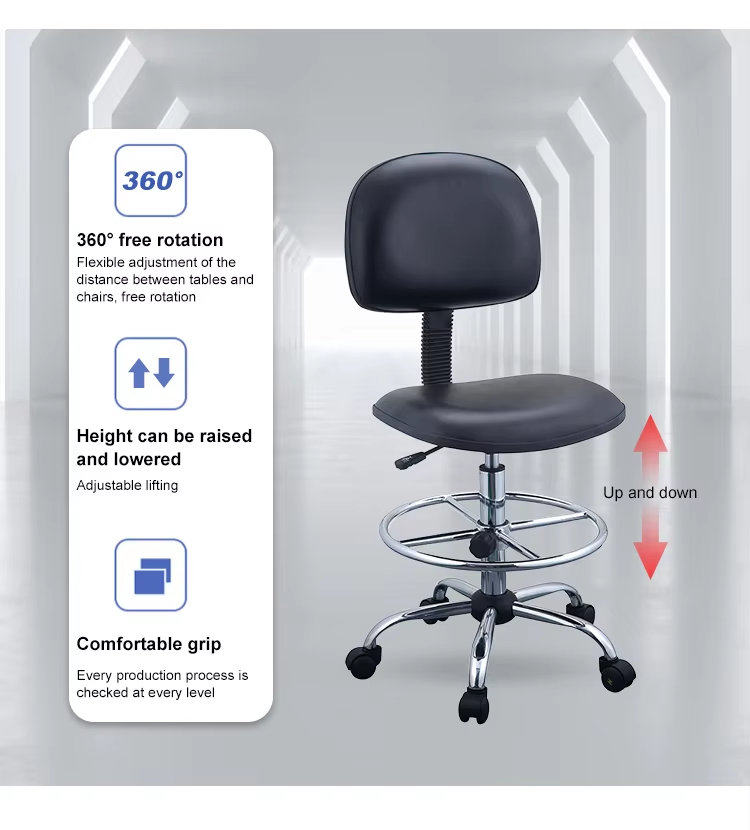When comparing ESD PU Leather Chairs and ESD PU Foam Chairs, the key differences lie in material composition, comfort, durability, and suitability for ESD (Electrostatic Discharge) environments. Here’s a breakdown:
Material & Construction
ESD PU Leather Chair:
Made of polyurethane (PU) leather, a synthetic material that mimics real leather.
Typically has a smooth, non-porous surface that’s easy to clean.
Often used in professional or industrial settings where aesthetics and wipeability matter.
ESD PU Foam Chair:
Features a PU foam cushion (sometimes combined with fabric or mesh) for better breathability.
The foam is usually softer and more cushioned for extended sitting comfort.
May have a fabric or mesh cover, which can improve airflow but may require more maintenance.
Comfort & Ergonomics
PU Leather:
Firm support but can get hot and sticky over long periods due to lack of breathability.
Better for environments where cleanliness and spill resistance are priorities (e.g., labs, cleanrooms).
PU Foam:
More breathable and pressure-relieving, making it better for long work shifts.
Preferred in office or production environments where comfort is key.
3. Durability & Maintenance
PU Leather:
Highly durable and resistant to spills, oils, and chemicals.
Easy to wipe clean but may crack or peel over time with heavy use.
PU Foam:
Foam may compress over time, reducing comfort.
Fabric/mesh variants may absorb stains and dust, requiring more frequent cleaning.
4. ESD Performance
Both chairs are designed to dissipate static electricity, but:
PU Leather may have slightly better surface conductivity due to its smooth, consistent material.
PU Foam chairs rely on conductive fibers or additives in the foam/fabric to maintain ESD properties.
5. Best Use Cases
| Feature | ESD PU Leather Chair | ESD PU Foam Chair |
Environment | Labs, cleanrooms, medical | Offices, production floors |
| Comfort | Firm support, less breathable | Soft, breathable |
| Durability | High (resists spills) | Moderate (foam may sag) |
| Maintenance | Easy to wipe clean | May need more upkeep |
| Static Control | Excellent (smooth surface) | Good (depends on foam blend) |
Which One Should You Choose?
Pick PU Leather if you need easy cleaning, high durability, and a professional look (e.g., electronics manufacturing, labs).
Pick PU Foam if comfort and breathability are more important (e.g., long shifts in ESD-safe offices or assembly lines).




